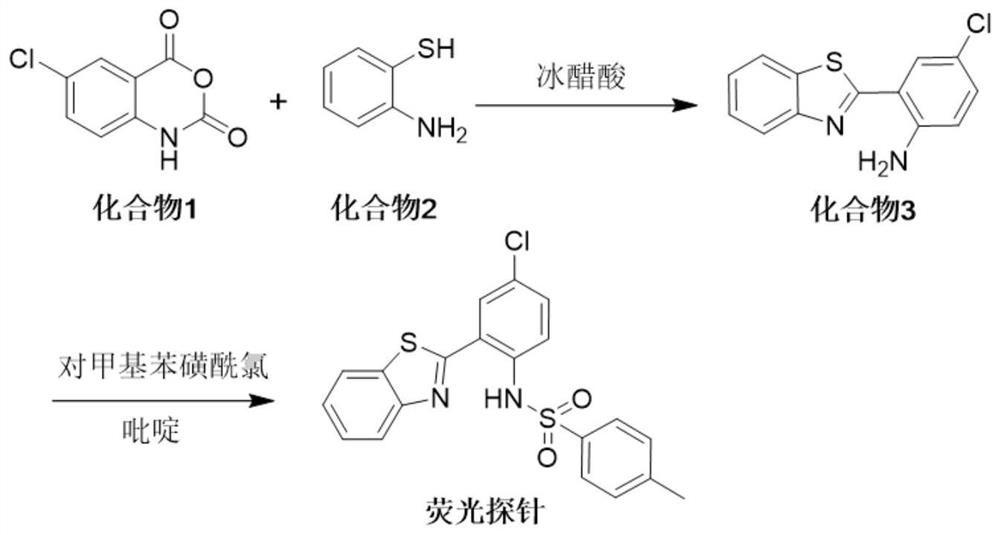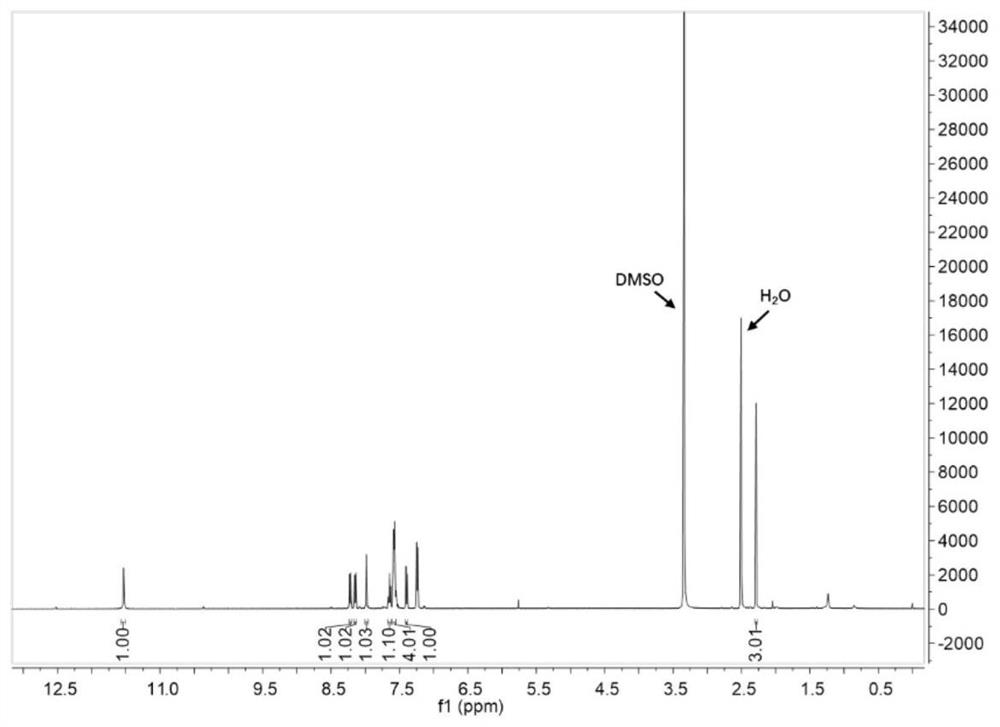Ratio type fluorescent molecular probe as well as preparation method and application thereof
A fluorescent molecular probe, ratiometric technology, applied in the field of ratiometric fluorescent molecular probes and its preparation, can solve the problems of low emission intensity, limited application of environmental detection, etc., achieve wide detection range, avoid self-absorption and biological background Fluorescence interference, the effect of cheap and easy-to-obtain raw materials
- Summary
- Abstract
- Description
- Claims
- Application Information
AI Technical Summary
Problems solved by technology
Method used
Image
Examples
Embodiment 1
[0036] Synthesis of fluorescent probes
[0037] R in the fluorescent probe structural formula prepared in this embodiment 1 = Cl, R 2 =H.
[0038] The synthesis technique route of present embodiment is asfigure 1 As shown, it specifically includes the following steps:
[0039] Synthesis of compound 3
[0040] Weigh compound 1 5-chloroisatoic anhydride (1.96g, 10mmol) and place it in a 250mL round-bottomed flask, add 40mL of acetic acid, dissolve and add compound 2 o-aminothiophenol (1.25g, 10mmol) dropwise under stirring at room temperature, room temperature After stirring for 5 hours, during the reaction process, the reaction solution gradually changed from gray turbid liquid to light yellow clear liquid; TLC monitored the reaction process, and the dark spots of raw materials gradually decreased, and blue fluorescent spots with relatively less polarity appeared. After the reaction was completed, the reaction solution was poured into 200 mL of water, and a yellow-gray prec...
Embodiment 2
[0045] Solvent Effects of Fluorescent Probes
[0046] Weigh 4.15 mg of the fluorescent molecular probe prepared in Example 1 and dissolve it in 100 mL of various organic solvents (normal hexane, dichloromethane, tetrahydrofuran, acetonitrile, N,N-dimethylformamide, dimethyl sulfoxide , ethanol, methanol) to obtain fluorescent probe solutions with a concentration of 100 μM in different polar solvents. Use a light source with a wavelength of 360nm to excite, measure the fluorescence emission spectrum, and after normalization, the results are as follows image 3 shown.
[0047] In non-polar solvents, such as the longest fluorescence emission wavelength in n-hexane, the strongest emission wavelength is located at 565nm, and its large Stokes shift (205nm) shows that it is the imine emission of fluorescent molecular probes; while in polar In slightly larger dichloromethane, tetrahydrofuran, and ethanol, the strongest emission wavelength has a certain blue shift (the emission peaks...
Embodiment 3
[0049] Preparation of Fluorescent Probe Stock Solutions
[0050] Accurately weigh 83 mg of the fluorescent molecular probe prepared in Example 1, add it into a 100 mL volumetric flask, add dimethyl sulfoxide to make it fully dissolve and constant volume, shake well to obtain a probe stock solution with a concentration of 2 mM.
PUM
 Login to View More
Login to View More Abstract
Description
Claims
Application Information
 Login to View More
Login to View More - R&D
- Intellectual Property
- Life Sciences
- Materials
- Tech Scout
- Unparalleled Data Quality
- Higher Quality Content
- 60% Fewer Hallucinations
Browse by: Latest US Patents, China's latest patents, Technical Efficacy Thesaurus, Application Domain, Technology Topic, Popular Technical Reports.
© 2025 PatSnap. All rights reserved.Legal|Privacy policy|Modern Slavery Act Transparency Statement|Sitemap|About US| Contact US: help@patsnap.com



